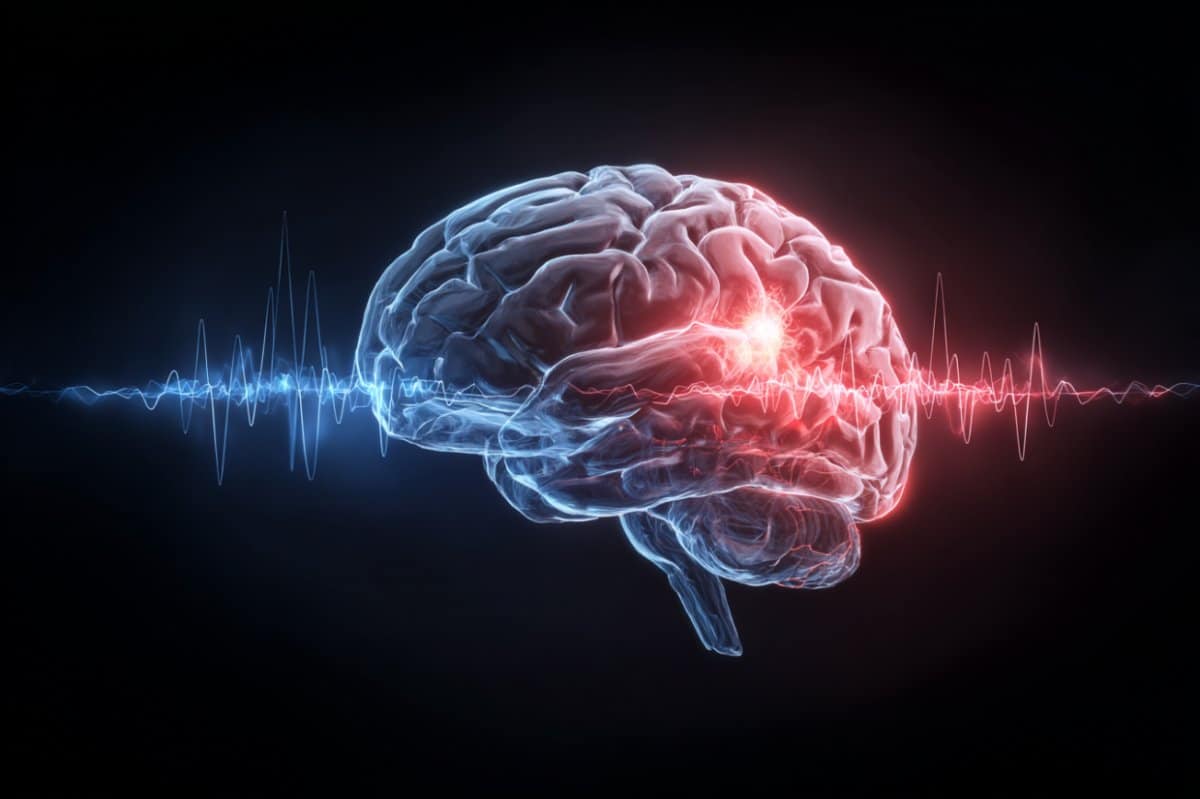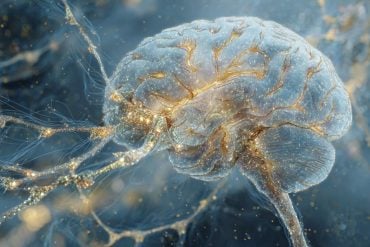Key Questions Answered:
Q: Why do emotional memories feel more vivid than neutral ones?
A: Because emotional memory encoding involves unique coordination between the amygdala and hippocampus, which boosts recall strength.
Q: What did the study reveal about brain activity during memory retrieval?
A: Gamma activity patterns formed in the amygdala during emotional encoding were reactivated in the hippocampus during both encoding and retrieval.
Q: How does this discovery impact our understanding of conditions like PTSD?
A: It identifies a potential mechanism behind intrusive emotional memories, offering a target for future treatments that could modulate or disrupt maladaptive memory reactivation.
Summary: A new study using direct recordings from human brains reveals how the amygdala and hippocampus coordinate to form and retrieve emotional memories. During aversive memory encoding, high-frequency gamma activity in the amygdala shapes hippocampal responses, which are later reactivated in the hippocampus—but not the amygdala—during memory recall.
These patterns were uniquely tied to correctly remembered emotional scenes and absent for neutral memories. The findings offer a mechanistic explanation for why emotionally intense experiences are often more vividly remembered and point to new therapeutic avenues for memory-related disorders.
Key Facts:
- Amygdala Drives Encoding: High gamma bursts in the amygdala during emotional experiences shape hippocampal activity.
- Hippocampus Stores Reactivation: These amygdala-driven patterns are later reactivated only in the hippocampus during retrieval.
- Potential Clinical Impact: Insights could lead to treatments that target memory reactivation in PTSD and anxiety disorders.
Source: Neuroscience News
Why do emotionally charged memories stick with us so vividly, while mundane ones fade?
A new study using intracranial recordings from human patients reveals a compelling neural choreography between the amygdala and hippocampus that helps explain why aversive experiences often etch themselves deeply into memory.
The research, published in Nature Communications, uncovers how specific patterns of brain activity during the encoding of emotional events are later reactivated during memory retrieval—not in the amygdala where they originated, but in the hippocampus.

This breakthrough not only refines our understanding of emotional memory but may also offer insights into conditions such as PTSD and anxiety.
When we experience something emotionally intense—say, a traumatic image or a fearful encounter—our brain doesn’t treat it like any ordinary moment. Instead, it recruits specialized structures to process and store that memory in a way that ensures it can be vividly recalled later.
The amygdala, long associated with emotion processing, and the hippocampus, known for its role in memory, work in tandem to encode these experiences. Until now, scientists weren’t certain how this collaboration translates into long-term memory formation and subsequent retrieval.
This study bridges that gap, showing how the amygdala’s rhythmic high-frequency activity imprints patterns that the hippocampus later uses to replay the memory.
Using rare direct recordings from patients undergoing neurosurgical monitoring for epilepsy, researchers observed the brain in action as participants viewed emotional and neutral scenes. Twenty-three patients had electrodes implanted in the amygdala, and fourteen of them also had coverage in the ipsilateral hippocampus.
Over two days, participants first viewed scenes—some neutral, some aversive—and made basic indoor/outdoor judgments. A day later, they were tested on their memory for these images, categorizing them as either “remembered,” “known,” or “new.”
The findings were striking. Correctly remembered aversive scenes triggered a specific increase in gamma activity (60–85 Hz) in the hippocampus, starting about 0.7 seconds after the image appeared. Interestingly, the amygdala didn’t show this same retrieval-specific gamma signature.
Instead, its role seemed to be in shaping the memory at the moment of encoding. During this phase, bursts of high-frequency gamma activity (90–150 Hz) in the amygdala were found to entrain hippocampal responses. These patterns were then reactivated—but only in the hippocampus—during both memory encoding and later retrieval.
To dig deeper, the researchers used a method called representational similarity analysis (RSA). This approach allowed them to assess how closely patterns of brain activity during retrieval resembled those seen during encoding.
Globally, the gamma activity patterns during encoding and retrieval were actually decorrelated—suggesting that at the broad level, the brain isn’t simply replaying the same signals.
However, when researchers zoomed in on phasic gamma bursts in the amygdala—sharp, transient spikes of activity—they found something remarkable: these precise patterns were reactivated in the hippocampus.
Even more revealing, the hippocampus didn’t just passively echo the amygdala. During the original encoding, the hippocampal activity mirrored the amygdala’s phasic gamma bursts with a delay of about 0.5 to 1 second.
Later, during retrieval, the hippocampus reactivated those same specific patterns without the amygdala needing to “remind” it. In essence, the amygdala acted like a composer laying down a musical theme that the hippocampus would later perform solo.
The specificity of this reactivation was tested through multiple controls. For example, when researchers looked at other regions like the lateral temporal cortex, they found no such pattern of reactivation.
Moreover, random time windows unrelated to amygdala peaks did not show this effect—confirming that the reactivation is both structure- and time-specific.
The implications of this work are far-reaching. In disorders such as PTSD, emotional memories are often relived with distressing clarity. Understanding the temporal and structural dynamics of how emotional experiences are stored and reactivated could inform new therapies aimed at weakening or modifying these memories.
The researchers suggest that brain stimulation strategies, like amygdala theta-burst stimulation, might one day be fine-tuned to disrupt or enhance specific memory traces depending on clinical needs.
In sum, this research sheds light on a fundamental aspect of human cognition: how we remember what matters. By showing that the amygdala doesn’t merely signal emotional importance but actually imprints its signature onto the hippocampus, the study offers a compelling neural explanation for why certain moments become unforgettable. The brain, it turns out, is not just a passive recorder of experience—but a dynamic and highly selective storyteller.
As we continue to uncover how memory works at the level of millisecond-scale brain rhythms, one thing is becoming clear: the story of emotional memory is not just about what we feel, but when and where we feel it in the brain.
About this neuroscience and emotional memory research news
Author: Neuroscience News Communications
Source: Neuroscience News
Contact: Neuroscience News Communications – Neuroscience News
Image: The image is credited to Neuroscience News
Original Research: Open access.
“Human hippocampal reactivation of amygdala encoding-related gamma patterns during aversive memory retrieval” by Manuela Costa et al. Nature Communications
Abstract
Human hippocampal reactivation of amygdala encoding-related gamma patterns during aversive memory retrieval
Emotional memories require coordinated activity of the amygdala and hippocampus.
Human intracranial recordings have shown that formation of aversive memories involves an amygdala theta-hippocampal gamma phase code.
Yet, the mechanisms engaged during translation of aversive experiences into memories and subsequent retrieval remain unclear.
Directly recording from human amygdala and hippocampus, here we show that hippocampal gamma activity increases for correctly remembered aversive scenes.
Crucially, patterns of amygdala high amplitude gamma activity at encoding are reactivated in the hippocampus, but not amygdala, during both aversive encoding and retrieval.
Trial-specific hippocampal gamma patterns showing highest representational similarity with amygdala activity at encoding are reactivated in the hippocampus during aversive retrieval.
This reactivation process occurs against a background of gamma activity that is otherwise decorrelated between encoding and retrieval.
Thus, phasic hippocampal gamma responses track the retrieval of aversive memories, with activity patterns apparently entrained by the amygdala during encoding.






